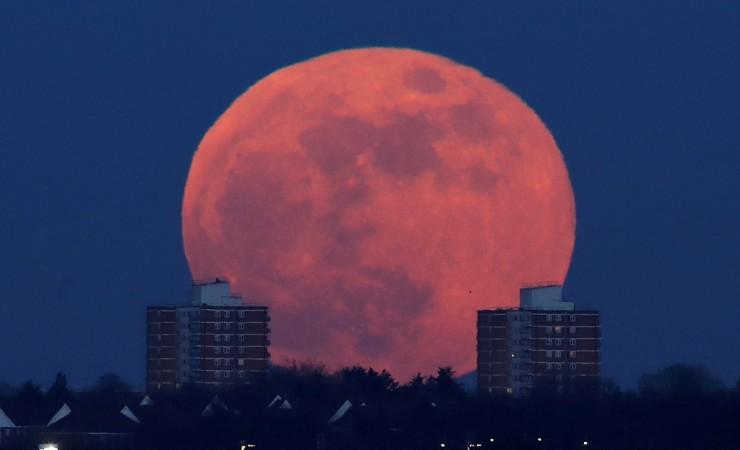
With the cameras in their hands and heads held high, January 31 saw people throng to their rooftops to catch the rare celestial phenomenon dubbed as the Supermoon 2018.
The beautiful sight watched the convergence of three rare events coming together – supermoon, blue moon and total lunar eclipse – which happened for the first time in 150 years. The phenomenon is known as the Lunar Trilogy.
Also read: Super Blue Blood Moon: What makes this event rare and special?
During a Lunar eclipse, the moon comes under the shadow of the earth. During this time, the moon, the sun and the Earth comes in one line – with the planet coming in the centre. A Blue Moon is termed as the second full moon of the month and takes places once in two-and-a-half years. Whereas a supermoon watches the moon is the closest to the earth and coincides with a full moon.
As seen by many, the moon on Jan 31 transformed from white to red and back to its original colour in the span of approximately three hours.
While the Eastern part of the Earth slept watching the Supermoon, most people in the West pulled an all-nighter to watch the moon go red. In India, the moon entered the penumbra about 4:22 pm IST. The moon turned completely red between 6:20 and 6:30 and it left the penumbra around 9:30 pm IST.
The rare sight served as an amazing Instagram moment and photographers did not hold back. Here are a few stunning captures from the celestial event taken from India, Russia, New York, San Diego, Singapore and more:




Time lapse: A super blue blood moon rises behind Parthenon, #Acropolis of #Athens #Greece on 31 January 2018 #SuperBlueBloodMoon #LunarEclipse2018 pic.twitter.com/Bn3BLOMcVN
— epoca libera (@epocalibera) January 31, 2018
A Fools Guide to what really happened. Compressed and Fast Forwaded from 4hrs to 1 minute #SuperBlueBloodMoon pic.twitter.com/P4lPbMOeBB
— Black Butterfly (@greateraspect) January 31, 2018
LIVE NOW: #LunarEclipse2018! The Earth is directly between the Sun and Moon, making the lunar surface appear red. You can watch views of the #SuperBlueBloodMoon from multiple telescopes live online! Take a look: https://t.co/r6X6SoMfLn pic.twitter.com/TBtNOKd5Yw
— NASA (@NASA) January 31, 2018












!['Had denied Housefull franchise as they wanted me to wear a bikini': Tia Bajpai on turning down bold scripts [Exclusive]](https://data1.ibtimes.co.in/en/full/806605/had-denied-housefull-franchise-they-wanted-me-wear-bikini-tia-bajpai-turning-down-bold.png?w=220&h=138)
![Nayanthara and Dhanush ignore each other as they attend wedding amid feud over Nayanthara's Netflix documentary row [Watch]](https://data1.ibtimes.co.in/en/full/806599/nayanthara-dhanush-ignore-each-other-they-attend-wedding-amid-feud-over-nayantharas-netflix.jpg?w=220&h=138)



